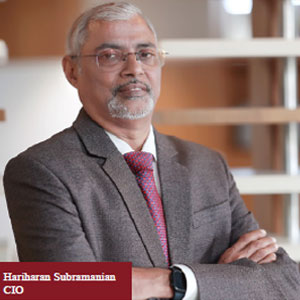 The construction and real estate sector is rapidly changing by digital transformation, enhancing efficiency and transparency. With the market expected to grow significantly by 2028, driven by rising demand for residential and commercial spaces, the industry still faces significant challenges. Despite these challenges, the sector is undergoing a digital transformation such as cloud-based platforms, automation, and data analytics are reshaping project management, customer engagement, and sustainability initiatives to meet the demands of a growing market.
The construction and real estate sector is rapidly changing by digital transformation, enhancing efficiency and transparency. With the market expected to grow significantly by 2028, driven by rising demand for residential and commercial spaces, the industry still faces significant challenges. Despite these challenges, the sector is undergoing a digital transformation such as cloud-based platforms, automation, and data analytics are reshaping project management, customer engagement, and sustainability initiatives to meet the demands of a growing market.Hariharan Subramanian, Shriram Properties in an interaction with CIOTechOutlook shared his insights on the challenges the company has faced in adopting and integrating new technologies in realestate development, how Shriram Properties has incorporated smart home technology into its residential projects, how has it leveraged data analytics to make decisions on land acquisition, pricing, and project feasibility and more.
Known for his exemplary leadership and visionary contributions at Shriram Properties, Subramanian's ability to anticipate industry trends and seamlessly align IT initiatives with organizational goals is truly commendable. His leadership continues to inspire teams to push the boundaries of what is possible through technology.
In a bold step toward digital resilience, Hariharan Subramanian led a transformational cybersecurity initiative by implementing Zero Trust Network Access (ZTNA) across the Shriram Properties IT infrastructure. His leadership ensured a fundamental shift from traditional perimeter-based defenses to a modern, identity-aware, least-privilege access model, significantly reducing the organization's attack surface and enhancing security posture in the face of growing cyber threats. Let us hear more him in this one-on-one interaction.
What challenges have you faced in adopting and integrating new technologies in real estate develop ment? And how do you overcome these challenges?
Shriram properties addresses these challenges by adopting a phased implementation, where it tests such technologies in a few selected projects within the cities such as Bangalore, Chennai, Kolkata & Pune to measure the advantages and develop internal support through success stories. The Partnership with ERP vendors such as SAP and digital marketing agencies reduce costs and advance implementation. The company conducts regular workshops and digital literacy programs for site supervisors, engineers and back office teams to facilitate technology adoption. Designated internal champions, referred to as “tech ambassadors”, are identified within each department to promote and support the implementation of new technological initiatives.
Prioritizing the use of modular and scalable solutions such as CRM before full ERP deployment and leveraging cloud-based tools, Shriram Properties ensures flexibility at low infrastructure expenditure, centric technologies, such as virtual tours and online booking platforms, enhancing buyer experience and drive transformation momentum.
How is your company incorporating smart home technology into your residential projects? Can you provide examples of specific technologies being integrated into your properties?
Shriram Properties is progressively facilitating Smart house technologies into its residential projects to fulfil a more relaxed environment at home, convenience and energy efficiency to cut on expenses. Its recent developments are pre-installed with features such as smart lighting, video door phones, digital locks
and app based smart-home systems that allow people to operate appliances, lights and security devices via their smartphones.
The company is also implementing IoT enabled water and energy meters to promote sustainable living and give residents better visibility over consumption. In premium offers, it also provides voice controlled systems such as Alexa, climate control and motion sensor lighting in common areas which gives a futuristic touch. Its main goal is to provide future ready homes that align with the evolving expectations of buyers who are into tech and gadgets.
How does your company leverage data analytics to make decisions on land acquisition, pricing, and project feasibility?
Data analytics plays a crucial role in making strategic decisions across the real estate development lifecycles, particularly in land acquisition, pricing strategy, and project feasibility assessment. For land acquisition, the company employs GIS-based tools and heat maps to identify high demand zones by analyzing population growth trends, infrastructure development and commute patterns using sources such as satellite imagery, urban planning data and traffic analytics.
Shriram Properties incorporates competitive intelligence of property portals, competitor benchmarks and in-house CRM to develop dynamic pricing models that are responsive to buyer behavior, income segments and seasonal trends. This process enables them to price units accurately per floor, view, or phase while maintaining alignment with real-time market rates in the micro-market.
To determine the fluctuation effect of variable costs, sales cycles, and interest rates, sensitivity analyses are conducted to provide strong go/no-go decisions prior to the launching of a project. At the same time, compliance data and risk analytics are utilized to anticipate holdups in approvals, environmental clearances and regulatory bottlenecks. By integrating business intelligence plat forms such as Power BI with predictive modeling tools in Python or Excel, the company transforms raw market data into actionable insights enabling faster, smarter and low risk decisions that align with both market data into actionable insights enabling faster, smarter, and lower-risk decisions that align with both market demand and investor expectations.
How does technology help you streamline your supply chain management? Are there any innovations that assist in managing materials, logistics, or vendor relationships more effectively?
Technology plays a crucial role in ensuring the supply chain is streamlined at every step of the process from material procurement to coordinating with vendors and site logistics. Shriram Properties uses ERP software which is connected to vendor portals to manage purchase orders, delivery schedules and real time inventory across sites. Tools such as barcode scanning, digital GRNs and IoT based tracking which help to monitor material movement to reduce pilferage and delays. In the logistics sector, the GPS enabled transport tracking and route optimization software which ensures timely and cost efficient deliveries.
Moreover, the company has adopted automation for invoice validation and payment workflows which improves trans -parency and vendor trust. Data analytics and Centralized dashboards help to identify bottle necks, better negotiation terms, and forecasting material demand more accurately which makes the entire construction process more active and cost effective.
Looking ahead, what technologies do you plan to adopt in the next 3-5 years to further streamline operations, improve customer experience, or enhance the sustainability of your developments?
Shriram Properties is planning to adopt newer technologies to elevate the customer experience and sustainability of their upcoming developments. This plan includes AI powered project management tools for better construction planning, digital twins is also there to simulate the building performance and IoT sensors for smart energy and water management. On the customer side, the company is providing AR/VR tech for virtual walkthroughs around the property, chatbots for instant support and self-serve portals to make the process of purchasing easy. In case of sustainability, the company is looking at green building tech, BIM integrated modeling and real time carbon tracking. These innovations will help to build smarter, greener and more customer focused communities.
The company is also implementing IoT enabled water and energy meters to promote sustainable living and give residents better visibility over consumption. In premium offers, it also provides voice controlled systems such as Alexa, climate control and motion sensor lighting in common areas which gives a futuristic touch. Its main goal is to provide future ready homes that align with the evolving expectations of buyers who are into tech and gadgets.
How does your company leverage data analytics to make decisions on land acquisition, pricing, and project feasibility?
Data analytics plays a crucial role in making strategic decisions across the real estate development lifecycles, particularly in land acquisition, pricing strategy, and project feasibility assessment. For land acquisition, the company employs GIS-based tools and heat maps to identify high demand zones by analyzing population growth trends, infrastructure development and commute patterns using sources such as satellite imagery, urban planning data and traffic analytics.
Shriram Properties incorporates competitive intelligence of property portals, competitor benchmarks and in-house CRM to develop dynamic pricing models that are responsive to buyer behavior, income segments and seasonal trends. This process enables them to price units accurately per floor, view, or phase while maintaining alignment with real-time market rates in the micro-market.
To determine the fluctuation effect of variable costs, sales cycles, and interest rates, sensitivity analyses are conducted to provide strong go/no-go decisions prior to the launching of a project. At the same time, compliance data and risk analytics are utilized to anticipate holdups in approvals, environmental clearances and regulatory bottlenecks. By integrating business intelligence plat forms such as Power BI with predictive modeling tools in Python or Excel, the company transforms raw market data into actionable insights enabling faster, smarter and low risk decisions that align with both market data into actionable insights enabling faster, smarter, and lower-risk decisions that align with both market demand and investor expectations.
How does technology help you streamline your supply chain management? Are there any innovations that assist in managing materials, logistics, or vendor relationships more effectively?
Technology plays a crucial role in ensuring the supply chain is streamlined at every step of the process from material procurement to coordinating with vendors and site logistics. Shriram Properties uses ERP software which is connected to vendor portals to manage purchase orders, delivery schedules and real time inventory across sites. Tools such as barcode scanning, digital GRNs and IoT based tracking which help to monitor material movement to reduce pilferage and delays. In the logistics sector, the GPS enabled transport tracking and route optimization software which ensures timely and cost efficient deliveries.
Moreover, the company has adopted automation for invoice validation and payment workflows which improves trans -parency and vendor trust. Data analytics and Centralized dashboards help to identify bottle necks, better negotiation terms, and forecasting material demand more accurately which makes the entire construction process more active and cost effective.
Looking ahead, what technologies do you plan to adopt in the next 3-5 years to further streamline operations, improve customer experience, or enhance the sustainability of your developments?
Shriram Properties is planning to adopt newer technologies to elevate the customer experience and sustainability of their upcoming developments. This plan includes AI powered project management tools for better construction planning, digital twins is also there to simulate the building performance and IoT sensors for smart energy and water management. On the customer side, the company is providing AR/VR tech for virtual walkthroughs around the property, chatbots for instant support and self-serve portals to make the process of purchasing easy. In case of sustainability, the company is looking at green building tech, BIM integrated modeling and real time carbon tracking. These innovations will help to build smarter, greener and more customer focused communities.



